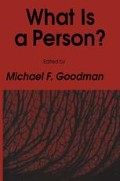Abstract
This essay deals with the question of the morality of abortion and infanticide. The fundamental ethical objection traditionally advanced against these practices rests on the contention that human fetuses and infants have a right to life. It is this claim which will be the focus of attention here. The basic issue to be discussed, then, is what properties a thing must possess in order to have a right to life. My approach will be to set out and defend a basic moral principle specifying a condition an organism must satisfy if it is to have a right to life. It will be seen that this condition is not satisfied by human fetuses and infants, and thus that they do not have a right to life. So unless there are other objections to abortion and infanticide which are sound, one is forced to conclude that these practices are morally acceptable ones.1 In contrast, it may turn out that our treatment of adult members of some other species is morally indefensible. For it is quite possible that some nonhuman animals do possess properties that endow them with a right to life.
Access this chapter
Tax calculation will be finalised at checkout
Purchases are for personal use only
Preview
Unable to display preview. Download preview PDF.
Notes and References
My book, Abortion and Infanticide (Oxford University Press, 1983), contains a detailed examination of other important objections.
Judith Jarvis Thomson, in her article “A Defense of Abortion,” Philosophy & Public Affairs, 1, 1971, 47–66, argues very forcefully for the view that this conclusion is incorrect. For a critical discussion of her argument, see Chapter 3 of Abortion and Infanticide.
American Law Institute, Model Penal Code (Philadelphia, 1962), section 230.3.
Abortion and Infanticide, chapter 10.
In Philosophy and Environmental Crisis, William T. Blackstone ed., (Athens, Georgia, 1974), pp. 43–68.
In Philosophy and Environmental Crisis, William T. Blackstone ed., (Athens, Georgia, 1974), p. 51.
In Philosophy and Environmental Crisis, William T. Blackstone ed., (Athens, Georgia, 1974), pp. 49–50.
In Philosophy and Environmental Crisis, William T. Blackstone ed., (Athens, Georgia, 1974), p. 51.
In Philosophy and Environmental Crisis, William T. Blackstone ed., (Athens, Georgia, 1974), section 5.2.
For a fuller discussion, and defense of this principle, see op. cit., section 5.3.
For a detailed survey of the scientific evidence concerning human development, see op. cit., section 11.5.
For a detailed survey of the scientific evidence concerning human development, section 11.42.
For a brief discussion, see Joseph F. Donceel, “A Liberal Catholic’s View,” Abortion in a Changing World, vol. 1, edited by R. E. Hall (New York, 1970).
A more detailed philosophical discussion can be found in Donceel’s “Immediate Animation and delayed Hominization,” Theological Studies, 31, 1970, 76–105.
For a much more extended discussion of this point, see, for example, Peter Singer’s essay, “Animals and the Value of Life,” Matters of Life and Death, ed. by Tom Regan (Philadelphia, 1980), or my own discussion in section 4.2 of Abortion and Infanticide.
For a much more extended discussion of this point, see, for example, Peter Singer’s essay, “Animals and the Value of Life,” Matters of Life and Death, ed. by Tom Regan (Philadelphia, 1980), or my own discussion in section 4.2 of Abortion and Infanticide, section 7.33.
Philippa Foot, “The Problem of Abortion and the Doctrine of the Double Effect,” The Oxford Review, 5, 1967, 5–15. See the discussion of pp. 11ff.
For a much more detailed defense of this view, see section 6.5 of Abortion and Infanticide.
A discussion of why this is so can be found in Chapter 7 of Abortion and Infanticide.
Editor information
Editors and Affiliations
Rights and permissions
Copyright information
© 1988 The Humana Press Inc.
About this chapter
Cite this chapter
Tooley, M. (1988). In Defense of Abortion and Infanticide. In: Goodman, M.F. (eds) What Is a Person?. Contemporary Issues in Biomedicine, Ethics, and Society. Humana Press. https://doi.org/10.1007/978-1-4612-3950-5_4
Download citation
DOI: https://doi.org/10.1007/978-1-4612-3950-5_4
Publisher Name: Humana Press
Print ISBN: 978-1-4612-8412-3
Online ISBN: 978-1-4612-3950-5
eBook Packages: Springer Book Archive

